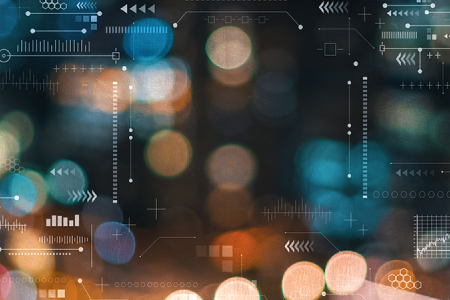- 05/10/2024
Startups are helping people categorize and store their own data while they’re still alive. Other companies are creating bots built on the data of the deceased, including voices and imagery, to conjure 3D versions of those no longer with us. Of course, the question of who gets grandmother’s silverware can be a thorny mess, but what about which of the grandchildren has the right to recreate her in digital form? These are extremely complex issues.
Q: So Anjali, how did you first become interested in this idea of the “digital afterlife?”
A: I started following signals that pointed toward a few big issues. One is that it became clear to me that there's no formal agreement among business leaders, legal scholars, government officials and technologists to protect the digital rights of people who have passed away. I also discovered that the amount of data that people leave behind is only going to get bigger. Because there's so much data and there are no legal constraints about how to protect or use this data, it's kind of like the Wild West in terms of what people can do with it.
In some cases, people are manipulating this data in weird and funky ways, especially with the advent of generative AI. There are AI tools that can “resurrect” dead personalities, using bots that are modeled on a dead person’s data. This is going to become much more complicated as the amount of data grows and the tools become more sophisticated. In some cases, it could be useful to people, and in others in could have some really devastating effects.
Q: I see what you mean. I’m not sure that I would want to speak with a bot-enabled deceased relative, but I can imagine that other people might?
A: When a generative bot is trained on a dead person’s data, it can create new conversation. You can ask the bot a question and have the answer be in the voice of the deceased. You can ask the bot for guidance in a present-day situation, for example. And because the bot is trained on a real-person’s data, it gets especially weird when you start to think what you might be able to find out about that person because they no longer control their own data. There may be these revelatory moments where users are shocked by what they find. Some labs are even creating deepfakes to put faces to these bots, so that the deceased person can be recreated in 3D. At a societal level, it has the possibility to change our whole concept of death, coping with the loss, and moving on.
Q: You spoke to me earlier about the concept that “human rights don’t extend to digital rights.” What do you mean by that?
A: When we think about bequeathing items in a will, we think about very physical objects: watches, cars, and other valuables that may be extremely important to a person’s identity. As a society, we know how to deal with physical objects. But just as a person has an organic body, they also have an informational body, and that body continues to exist after they take their last breath. This could include emails and images, a person’s entire search history or their biometrics information. This data serves as a proxy for identity. Digital rights that protect this informational body are not robust. Scholars have just started formulating ideas about what those rights might look like.
Think about a science or art museum that possesses human remains. There are protocols and obligations the museum has for storing and displaying them. Is there a way we can ensure that digital remains are dealt with in a similarly dignified manner?
Q: I’ve never given much thought to what happens to my data after I die. I suppose it will live on forever?
A: A lot of people make that assumption. It’s not true. Our data is far more ephemeral than we want to believe. Data decays, file formats change. This makes it more difficult when you’re talking about the data of the deceased. It’s much easier to preserve a physical object.
Q: It’s a fascinating subject, but why would a financial services company be interested in the digital afterlife of its customers?
A: In financial services, we talk a lot about digital assets. One’s data is also a part of their digital assets. Is there a need for evaluating this data and making a plan for what to do with it? Do people want to pass it on? Should it be included in conversations about wealth transfers? These are some of the questions for which there are not yet any answers.











